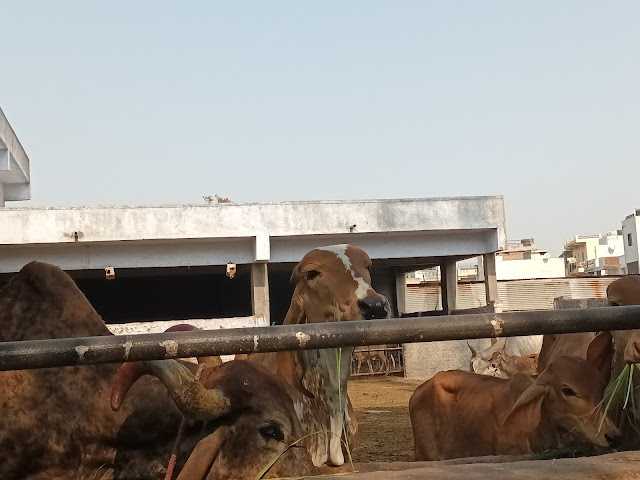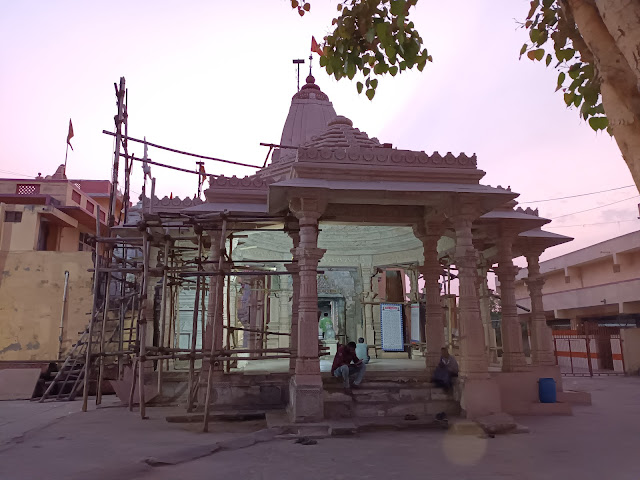Digital Cultural Heritage deals with preserving our heritage in a digital form. Heritage is vital to mankind as it shapes our habits and our way of thinking. Heritage should be saved so that we can fulfil our duty of passing on what we have received to the next generation. This conservation can be done by way of images, audio, text, software, apps etc. This way, heritage can be kept safe from destructive factors such as manmade and natural calamities. This project aims at capturing the essence of a few temples of Ahmedabad and presenting them on a digital platform.
In the 19th century, during British rule, Ahmedabad was booming with energy and zest due to its prosperous Cotton Textile Mill Industry. These mills raised the economy of Gujarat. The fertile black soil available for cotton farms, cheap labour and electricity, the weather and proximity to ports made Ahmedabad the perfect place to establish the textile mills. Ahmedabad was glorious in this sector, so much so, that Ahmedabad was called the Manchester of the East.
The Nilkanth Mahadev Temple in Ahmedabad is situated at the heart of the now-dead textile mill area. Located very close to the Asarwa Mills, the Nilkanth Mahadev Temple is an ancient Shiva shrine that is one of the main features of Ahmedabad. Given here is a soundscape of an excerpt of the evening aarti.
The temple has a rich and picturesque history. It has had a series of governing Maharajas (saints put in charge of the temple) who have made monumental changes and improvements in the working of the temple. Shree Hirapuriji Maharaj was the one who instituted the temple. He was a disciple of His Holiness Shree Manoharnathgiriji Maharaj. On his instructions, Shree Hirapuriji left the Lunavada Akhada and set out to Ahmedabad to institute a temple. He was given an idol of Goddess Annapurna and some Vibhuti and was told to institute a temple in the area where he could find a divine Dhuni.
Shree Hirapuriji Maharaj came to Ahmedabad and found the divine Dhuni under a Kaner tree. He meditated at this spot. People from all over Gujarat came to seek his blessings and many engrossed themselves in his seva. This Dhuni which was found alight by Shree Hirapuriji burns to this day. Its ashes are emptied once a year.
One of the devotees who was associated with the shrine and Shree Hirapuriji was a grihastha by the name of Vechardas Mankiwala. It was with his efforts and donations that the temple was constructed. While the temple is a shrine of Lord Shiva, there are other deities too. When the temple was being constructed, idols of Ganapati and Hanuman and a stone for rubbing sandalwood were excavated.
Shree Ramnathgiriji was another Maharaj of the temple. He was instrumental in developing the temple and making a few changes to it. Shree Ramnathgiriji was the one who started the Swami Hirapuriji Sanskrit Pathshala. Students can learn from grade Prathama to Acharya. For the convenience of the students, a hostel was also created here. During the time of Shree Ramnathgiriji, a clinic used to function on the temple premises. Shree Ramnathgiriji also contributed to many social movements. When Vinoba Bhave started the Bhoodan Movement he donated 84 vighas of land. During the partition of India in 1947, the temple helped the refugees by providing them with shelter. Similarly, the temple has extended its support during events like the Naokhali riots, floods of Assam, drought in Kathiyavad and many others.
 |
| Brahmanishtha Mahant Maharaj Shree Lakshmangiriji Dattagiriji |
Each year, the temple celebrates the Janmashtami, Shravan Amavasya and Shivratri Mela (fairs). On the occasion of Shravan Amavasya, 1250000 bilipatras are offered to the deity. The temple also conducts poojas for the welfare of the people. Poojas such as Laghurudra, Maharudra and Navchandi and Bhagvat and Chaturmas Kathas are organized.
When one steps into the temple premises, the first thing that is noticed is the Sanskrit Vidhyalaya. In the morning, students are seen going to classes. The morning atmosphere is filled with the sounds of the students reciting mantras from the Vedas. The school was established on 21st August 1844 and renovated on 24th October 2018. The school accepts students after they complete their 8th grade. There is an entrance test and an interview for admission into the school. Students from all over the country study at the school. The medium of instruction is Sanskrit and usual subjects of Maths, Science, Social studies, etc. are taught here. The school building has recently been renovated and a computer lab has been installed here. The school receives government aid and is recognized by the government. Students can study and live here free of cost. Students can pursue an MA degree in Sahitya, Vastu, Jyotishi, Vyakaran, etc. The institution offers instruction up to MPhil. The students are involved in the daily activities of the temple too. As a part of their education, they perform Stuti Path like Rudrashtaka Path in the morning and are also engaged in conducting the aarti in the temple. Given here is a soundscape of the students reciting the Vedas. Also given here is a soundscape of the student's recitation session after the aarti in the evening.
Veda Mantra recitation
Students' recitation session after the evening aarti
The Nilkanth Mahadev Temple is 400-500 years old and belongs to the Niranjani Nilkanth Akhada. This temple has a gaushala where cows are taken care of. Additionally, there is a yagnakund where poojas take place. The temple has a samadhi of Shree Hirapuriji Maharaj who established the temple with his power of meditation. It also has the deities Kartikeya, Saraswati, Radha-Krishna, Ganpati, Hanuman, Annapurna, Mahakali, Shanidev and Bhairava. Each day aarti is done at 4 AM and 7:20 PM. The Maharaj of the temple performs pooja at the shrine of Goddess Annapurna every morning and evening. This shrine is generally not open to devotees. Only on special occasions such as Annapurna vrat, Diwali, New year, etc. is it opened to devotees. This section of the temple contains golden idols.
 |
| Shanidevji |
 |
| Mahakali |
 |
| Bhairava |
 |
| Gaushala |
 |
| Gaushala |
 |
| Gaushala |
 |
| Gaushala |
The Nilkanth Mahadev Temple is connected to the Akhada in Haridwar. A committee of 5 appoints the Maharaj who oversees the smooth functioning of the temple, the school, the saint's quarters and the surrounding areas owned by the temple. A saint fit to manage all the affairs of the temple is selected to be the next Maharaj of the temple. Once a saint is appointed Maharaj, they aren't allowed to step out of the temple premises. This rule was applied after an incident in the time of Shree Hirapuriji. When Shree Hirapuriji was the Mahant of the temple, about 400 saints were visiting the temple. As per the customs of the temple, aarti would be done of the Maharaja along with the deities. However, this wasn't approved by the visiting saints and they opposed the practice by saying that aarti cannot be done for a living person. Just as the aarti was stopped, a Brahmin-like figure emerged from the Ganpati idol and performed the aarti of Shree Hirapuriji. After this incident, it was declared that the Maharaj of the temple would be worshipped too. This is why the Maharajas are not allowed to exit the temple gates.
The temple receives donations from its devotees. Kathas are conducted which is another source of revenue. The temple also owns some land around the temple- where shops and housing facilities are constructed. This too contributes to the funds of the temple. The temple also hosts Bhandaras frequently.
 |
| Students recitation session after the evening aarti |
 |
| Devotee seeking blessings |
 |
| The current Maharaj- Shree Omanandgiri Shivaramgiriji |
Thus, the Nilkanth Mahadev Temple has been in Ahmedabad for a long time. All through the years, the temple has proved to be an object of reverence and a sustainer of Indian knowledge systems which fulfilled obligations to the society as well.
Source: The history of the temple given is as narrated by an alumnus of the Sanskrit Vidhyalaya.



























Comments
Post a Comment